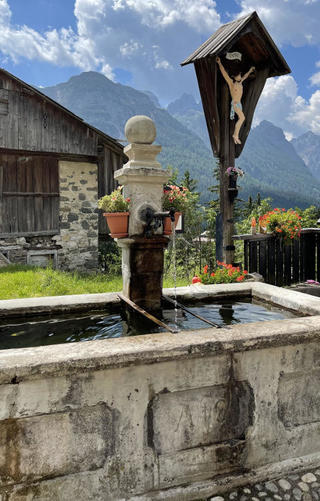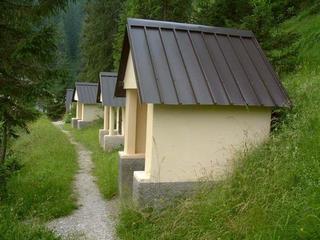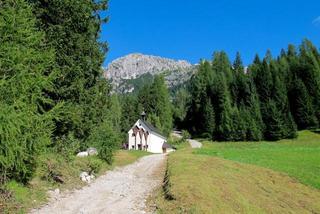
Mulhbach / Milpa
The Mühlbach village gets its name from the nearby mountain stream bearing the same name.
The name (literally, river of the flour mill) refers to some now inoperative (often renovated) water mills which can still be seen near the narrowing of the stream's basin, directly downstream from the waterfalls.
The historical center of the village lies between the edge of the slope that hangs over the Mühlbach stream basin to the West, and the nor-thern side of the Piave valley. On account of its position, some local authors (G. Fontana, 1966; A. Laguna, 1983) list Mühlbach as "the village with the best scenic view of the valley". The successive development of the village took place, in the '30s and '50s, immediately downhill, along a road that connects with the new street.
Particularly interesting is the area around the sharp curve of the old road, at the top of the ascending ramp of the Mühlbach slope. Here, next to the fountain, are a crucifix and a chapel dedicated to the Sacred Heart of Jesus (Hèrz Jesus maindl). Nearby there are also some rural buildings, one of which has the characteristic ramp-bridge (prucke) to access the barn.
The large school building (1907) was also used as the town hall until 1953, when the latter was relocated to the Bach village. The eastern end of the village is home to a few notable, traditional wooden homes, such as the s'Paurn house and the Milpa s’Ènders house.

The Calvary
The Mühlbach village also features the Calvary (Kolvàri) complex, erected as an offering by the Sappada resident Pietro Kratter Peaterlan in 1824.
It consists of 14 small chapels representing the Stations of the Cross whose path, beginning at the edge of Bach, ascends along the eastern slope of the stream basin to end at the small Calvary church next to which stand the three crosses of the Golgotha.





